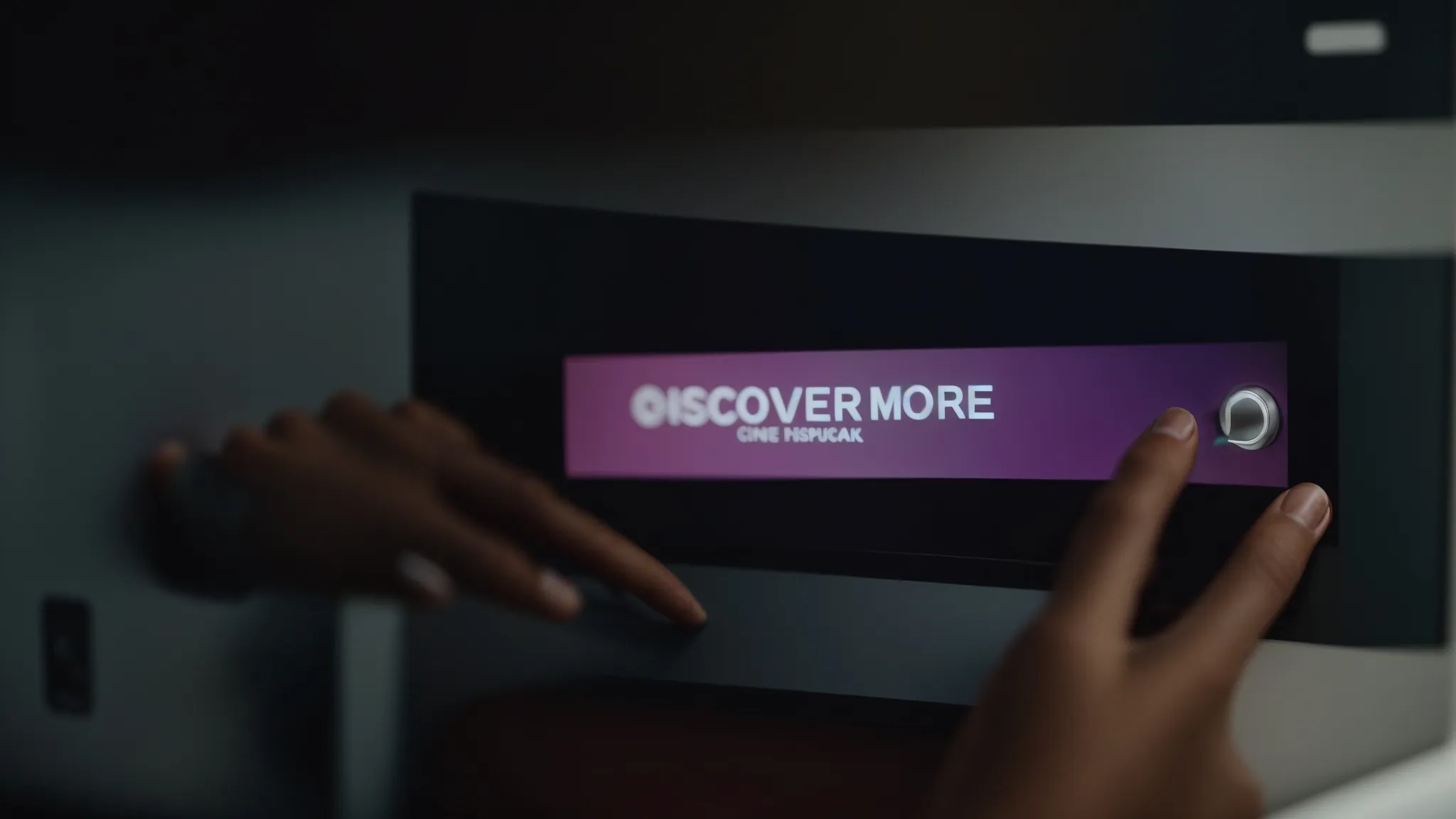10 Expert SEO Copywriting Tips for Optimized Web Content
Improve Your Online Presence: SEO Copywriting Tips In today’s digital age, the visibility of a website plays a pivotal role in its success. Mastering SEO copywriting is […]
Improve Your Online Presence: SEO Copywriting Tips
In today’s digital age, the visibility of a website plays a pivotal role in its success.
Mastering SEO copywriting is not just about sprinkling keywords throughout the text; it’s an art that combines strategic placement with engaging writing to captivate both the search engine algorithms and the target audience.
An insightful content strategy, intertwined with LinkGraph’s expertise, ensures that every element, from the meta description to the loading speed, works in harmony to propel the web page up the search engine results page (SERP).
LinkGraph’s SEO services are tailored to navigate these complex digital waters to enhance a brand’s online footprint.
Keep reading for valuable tips that will transform your website into a magnet for visitors and search engines alike.
Key Takeaways
- Effective Keyword Integration Is Essential for Aligning With Users’ Search Intent and Satisfying Search Engine Algorithms
- Strategic Use of Meta Descriptions and Calls-to-Action Can Significantly Improve Click-Through Rates and User Engagement
- Organized Content With Headers, Bullet Points, and Lists Enhances Readability and Aids in Visitor Navigation Through the Website
- Website Loading Speed Is a Critical Factor in User Experience, Retention, and Search Engine Rankings
- A Brand’s Unique Voice Is Central to Creating Engaging SEO Content That Resonates With the Target Audience and Embodies the Brand’s Identity
Understand the Role of Keywords in SEO

In the domain of search engine optimization, the strategic employment of keywords acts as a beacon, guiding the audience towards the content they seek.
As gatekeepers of the digital realm, SEO copywriters are tasked with mastering the delicate art of keyword research, ensuring the target keywords resonate with the user’s search intent and align with the brand’s voice.
Subsequently, understanding how to weave these keywords seamlessly into web page elements—from title tags and headings to body copy and meta descriptions—not only captivates the reader but also satiates the complex appetites of search engine algorithms.
Let’s delve into the essentials of identifying the correct keywords that echo the queries of the searcher and explore the nuances of embedding them within SEO content without disrupting the natural flow of the text.
Research the Right Keywords for Your Audience
Embarking on the journey to identify the most effective keywords requires marketers to immerse themselves in the world of their target audience. This begins with the utilization of advanced tools such as LinkGraph‘s Search Atlas, which offers a comprehensive keyword tool to uncover search terms that hold the most potential for visibility and traction.
Recognizing the importance of precision, savvy content strategists at LinkGraph conduct a holistic backlink analysis, underlining the vitality of overarching content strategy that encompasses both guest posting and leveraging White Label SEO services to create compelling blog writing with the ideal keyword density.
Learn How to Strategically Place Keywords in Copy
Mastering the strategic placement of keywords is akin to an artist distributing colors across a canvas: each term meticulously positioned to enhance the overall picture. A content marketer must integrate the target keyword into the title tag, seamlessly thread them into headings, and ensure their presence in the meta description for a robust SEO strategy.
The art of SEO copywriting demands that keywords appear in body copy with a rhythm that replicates natural speech, avoiding the pitfalls of keyword stuffing. A writer achieves a balance when leveraging Search Atlas to infuse keywords in a way that retains an authentic tone while fulfilling the criteria of search engine algorithms:
| Content Element | Keyword Integration | User Experience |
|---|---|---|
| Title Tag | Primary Keyword Presence | Reflects Search Intent |
| Headings | Strategic Keyword Placement | Guides the Reader through the Page |
| Body Copy | Natural Keyword Inclusion | Engages and Informs the User |
| Meta Description | Concise Keyword Summary | Entices Clicks from SERP |
Craft Compelling Meta Descriptions for Clicks

In the ongoing quest to improve an online presence, creating meta descriptions that perform exceptionally well becomes crucial.
These brief fragments of text, which give a glimpse into the heart of the webpage content, are instrumental in influencing the searcher’s decision to click through from the search engine results page.
By weaving in a potent call-to-action, businesses can dramatically improve their click-through rates, beckoning visitors to explore beyond the mere search result preview.
This serves as a gateway, compelling the audience to delve further, driven by meta descriptions that not only encapsulate the page’s essence but also prompt immediate engagement.
Write Meta Descriptions That Summarize Page Content
Meta descriptions serve as concise summaries of a web page, meticulously crafted to capture the crux of the content. They are the narrative threads that entice searchers to follow, providing a snapshot that aligns with what the searcher is pursuing.
It is imperative for the SEO copywriter to carefully distill the essence of the page’s content into these meta descriptions, ensuring that they not only convey the key message but also incorporate strategic keywords that resonate with the audience’s search intent.
Include a Call-to-Action in Your Meta Descriptions
Aligning the power of a clear call-to-action (CTA) within meta descriptions transforms a simple snippet into a gateway for enhanced user engagement. This succinct invitation acts as a vital touchpoint, spurring the reader into action: it beckons visitors to learn more, sign up, or even make a purchase, contingent on the specific objective of the landing page.
LinkGraph harnesses the potency of actionable language in meta descriptions as part of a Comprehensive SEO Strategy, a move that can substantially elevate click-through rates from SERPs. The artful craft of a CTA moves beyond mere keyword placement; it captures the essence of the searcher’s need, offering a solution and inviting a response with urgency and relevance.
| Landing Page Goal | Meta Description Focus | CTA Purpose |
|---|---|---|
| Product Page | Highlighting Key Features | Encourage Purchase |
| Blog Post | Summarizing Topic Insight | Prompt Further Reading |
| Email List Signup | Stressing Subscriber Benefits | Incentivize Subscription |
Optimize Your Content Layout for Readability

Prime visibility on the digital landscape hinges on more than just integrating the right keywords and crafting inviting meta descriptions.
An essential component of SEO copywriting is the strategic organization of content, designed to accentuate readability and retain visitor interest.
A business’s digital space must be a sanctuary of clarity, with headers and subheaders chiseling a clear pathway for the audience.
Similarly, bullet points and numbered lists break up dense paragraphs, enabling users to digest information efficiently.
The adept arrangement of page elements significantly elevates user experience, ensuring that the writer’s message resonates with the reader’s unspoken expectations.
Use Headers and Subheaders Effectively
Headers and subheaders serve as signposts guiding visitors through the content landscape, enabling them to navigate the terrain with ease. Crafting headings with precision ensures that both the target audience and search engines can grasp the structure of the information presented within the web page.
Employing headings effectively involves more than the simple insertion of keywords; it’s the strategic use of header tags that shapes the user’s experience, influencing their journey from the introduction to the concluding call-to-action:
| Header Tag | Function | Impact on Reader |
|---|---|---|
| H1 | Introduces Main Topic | Sets Expectations for Content |
| H2 | Defines Subtopics | Clarifies Content Hierarchy |
| H3 | Details Specific Points | Facilitates Skimming |
Integrate Bullet Points and Numbered Lists
When presenting complex data or enumerating key elements, the integration of bullet points and numbered lists can transform a dense block of text into a clear, consumable format. These lists enhance the user’s ability to quickly identify and absorb pertinent points:
- Bullet points distill information into accessible, bite-sized pieces.
- Numbered lists convey a sense of sequence, essential for step-by-step instructions or hierarchies.
Incorporating these elements not only breaks up the visual monotony of paragraphs but also caters to the user’s preference for scanning content. This strategic structuring contributes to smoother navigation through website pages, optimizing the reader’s journey from introduction to the pivotal call to action.
Enhance User Experience With Page Loading Speed

As the digital landscape continually evolves, so too does the importance of user experience in enhancing a brand’s online presence.
A critical but often overlooked facet is the website’s loading speed, a vital player in retaining visitor interest and reducing bounce rates.
Focusing on optimization practices such as compressing images and minimizing the use of heavy scripts and plugins directly correlates to smoother interactions with website pages.
By prioritizing these technical elements, businesses lay down the foundational layers for a seamless user journey, keeping pace with the high-speed demands of contemporary web users.
Compress Images to Reduce Loading Times
A user’s engagement with a website is often predicated on swift and seamless access to information, which underscores the criticality of expeditious page load times. LinkGraph recognizes this imperative; hence, they emphasize image compression as a pivotal SEO strategy to accelerate loading times without compromising on visual quality.
LinkGraph’s adept implementation of Advanced Image Optimization Techniques ensures that visual assets enhance rather than impede the user’s journey through a client’s digital landscape. This meticulous approach to image compression contributes significantly to a robust SEO framework, sharpening the competitive edge of a website in the cluttered online arena.
Minimize the Use of Heavy Scripts and Plugins
In an era where every second counts, optimizing a website’s load time is critical for maintaining user interest and engagement. LinkGraph’s approach to streamlining a site’s performance centers on reducing the dependency on heavy scripts and plugins, which are often culprits of slow loading times.
This reduction not only aids in delivering content to the user more efficiently but also aligns with the preferences of search engines that favor quick-loading pages:
- Audit existing scripts and plugins to assess necessity and impact on performance.
- Identify alternative solutions that achieve the same goals with less bandwidth consumption.
- Implement streamlined coding practices to reduce unnecessary script load.
By adopting these strategies, LinkGraph enhances the user experience, leading to improved search rankings and user satisfaction. Visitors to optimized pages will enjoy faster access to content, which increases the likelihood of conversion and bolsters the website’s standing in competitive digital markets.
Engage Your Audience With High-Quality Content

In the intricate ballet of digital marketing, the ability to captivate an audience with high-quality content is paramount.
The process begins with a unique voice—one that echoes the core identity of the brand while forging a deep connection with the reader.
This distinctive tone sets the stage for a compelling narrative, facilitating a shared journey between the client and their target customers.
To truly enrapture an audience, one must go beyond mere words on a screen; it is about crafting an experience that resonates, engages, and ultimately converts.
Within the ensuing discussion, strategies will be unfolded to hone that crucial voice, ensuring that every paragraph rises above the cacophony of the vast internet with clarity and purpose.
Develop a Unique Voice That Resonates With Readers
A brand’s unique voice is not merely a reflection of its corporate persona; it is an echo of its values and aspirations, crafted to resonate on a deeper level with the reader. LinkGraph, through its Search Atlas tool, aids companies in honing this voice, ensuring that it weaves through SEO content with authenticity, thereby forging a stronger bond with the audience.
This voice becomes the harmonic thread that ties together the reader’s experience, breathing life into each guided interaction on the web page. As searchers navigate through content, LinkGraph’s expertise in SEO copywriting ensures that the brand’s voice remains consistent, trustworthy, and tuned to address the audience’s most pressing pain points.
Frequently Asked Questions
How can I effectively use keywords in my SEO copywriting to improve my online presence?
To enhance your online presence using SEO copywriting, it’s essential to incorporate keywords naturally throughout the content, including in the title tag, headings, and body copy, while ensuring they align with the search intent of your target audience. Leveraging tools like LinkGraph’s Search Atlas can optimize your keyword strategy by providing insight into search engine algorithms, enabling an effective boost in keyword rankings within search engine results pages.
What are some tips for crafting compelling meta descriptions that encourage clicks?
Crafting compelling meta descriptions involves a delicate balance: succinctly summarizing the page content while integrating target keywords and evoking curiosity. One must ensure the tone aligns with the brand’s voice and clearly conveys the value proposition, compelling users to click and learn more.
How can I optimize the layout of my content for better readability and engagement?
Optimizing the layout of content for improved readability and engagement requires a strategic approach, focusing on the organization of information and visual presentation. To achieve this, one might consider the judicious use of headings and subheadings to break the text into digestible sections, and implementing bullet points or numbered lists to succinctly present key points, ensuring the content is easily scannable by the reader.
What strategies can I implement to enhance user experience through faster page loading speeds?
Improving user experience with faster page loading speeds can be achieved by optimizing image sizes, leveraging browser caching, and reducing server response times. Additionally, streamlining the number of plugins and utilizing content delivery networks (CDNs) allows users to access content more swiftly, enhancing overall satisfaction.
How can I create high-quality content that engages my audience and improves my online presence?
Creating high-quality content that engages your audience involves understanding their search intent and employing SEO strategies to enhance visibility. One effective method is by leveraging LinkGraph’s comprehensive SEO services and the Search Atlas SEO tool, ensuring content is optimized for both the user and search engine algorithms, leading to a stronger online presence.
How do I identify effective keyword ideas for my SEO copywriting strategy?
To identify effective keyword ideas, leverage advanced tools like LinkGraph’s Search Atlas. Conduct a holistic backlink analysis to understand potential keywords for improved visibility. Implementing a comprehensive content strategy, including guest posting and White Label SEO services, helps create compelling blog content with ideal keyword density.
Can you provide insights into the writing process phase of SEO content creation?
The writing process in SEO content creation involves strategically placing keywords in title tags, headings, body copy, and meta descriptions. Utilize tools like Search Atlas to seamlessly integrate keywords, maintaining an authentic tone while meeting search engine algorithm criteria. Following this process ensures a balanced and effective SEO copywriting strategy.
How can I engage influencers in my marketing campaign through SEO content writing?
Engaging influencers in your marketing campaign involves creating high-quality content that resonates with your target audience. By developing a unique voice with LinkGraph’s Search Atlas tool, your SEO content embodies your brand, strengthening connections with influencers and amplifying your online presence.
What role do bucket brigades play in creating SEO content that captivates the audience?
Bucket brigades, a writing technique involving engaging phrases that keep readers interested, play a crucial role in creating SEO content. By strategically placing these attention-grabbing elements in your content, you can enhance user engagement, reduce bounce rates, and improve overall readability, aligning with SEO best practices.
How can I ensure compliance with privacy policies while collecting email addresses for my marketing efforts?
When collecting email addresses for marketing campaigns, ensure compliance with privacy policies. Clearly communicate data usage and obtain consent. Implement secure and transparent practices to build trust with your audience, aligning with SEO best practices and legal standards in digital marketing.
Conclusion
Improving your online presence through SEO copywriting is essential in connecting with your audience and boosting your digital visibility.
By conducting thorough keyword research and strategically embedding these terms into your content, you create pathways that lead users directly to your offerings.
Crafting compelling meta descriptions with clear calls-to-action can significantly increase click-through rates.
Moreover, optimizing content layout enhances readability, while ensuring fast page loading times improves the overall user experience.
To truly captivate your audience, develop a unique voice that embodies your brand and resonates with readers.
By leveraging these SEO copywriting tips, you not only satisfy search engines but also provide value to users, leading to a stronger online presence and greater engagement.















































































